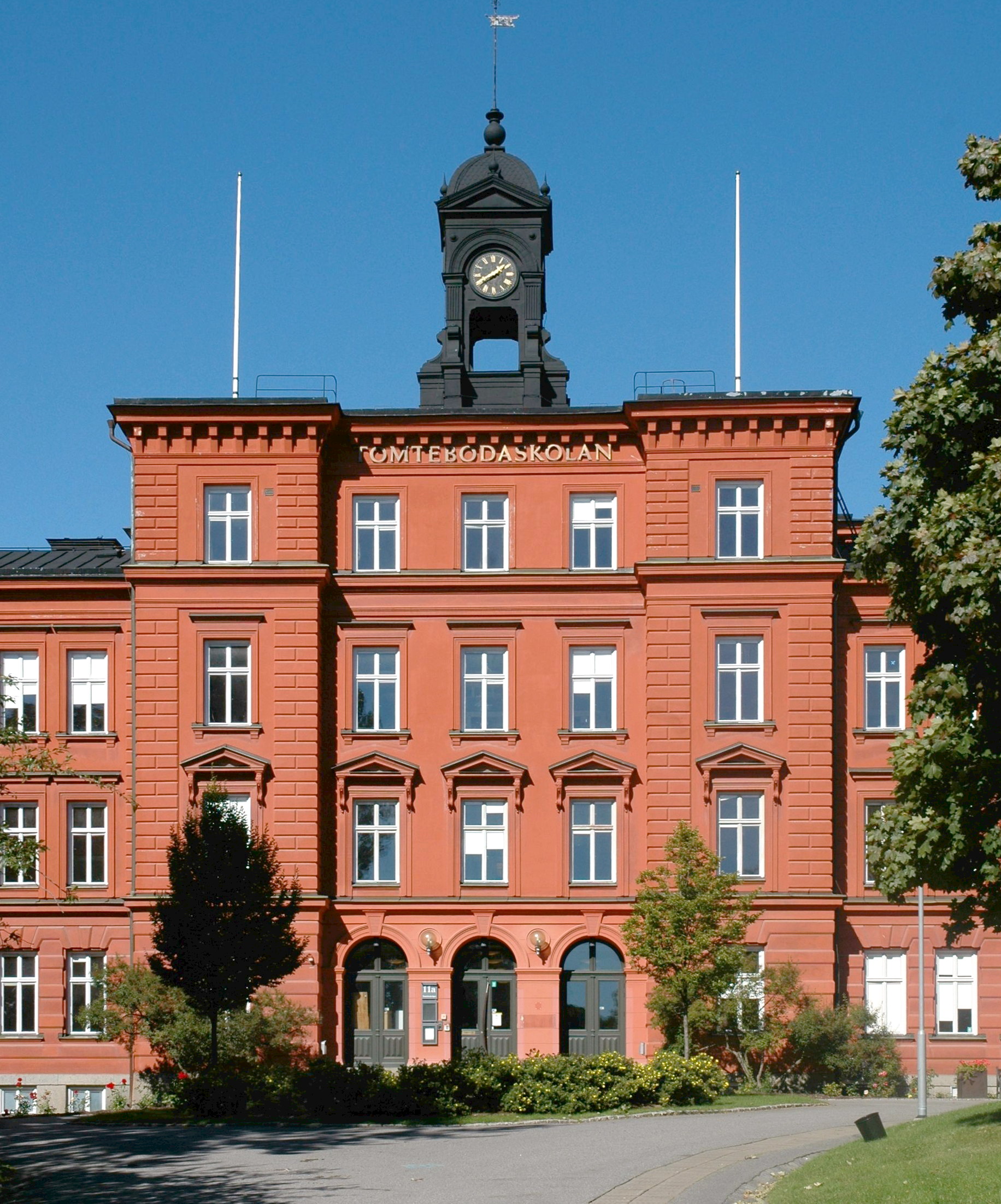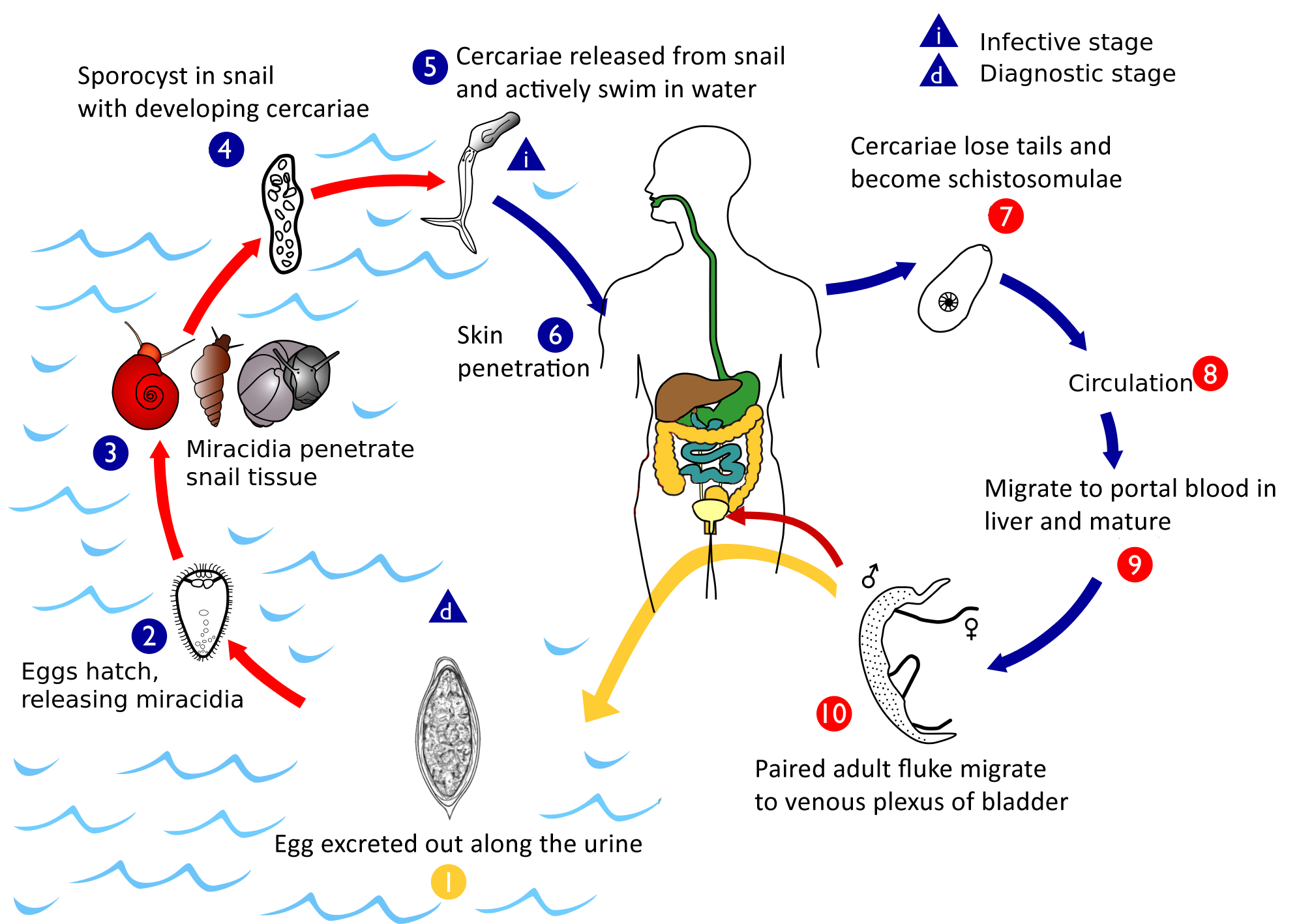|
Cavu
The Cavu or rivière de Cavu, (also called rivière de Cavo, ruisseau de Sainte-Lucie, ruisseau de Finicione) is a short river in the Corse-du-Sud department of Corsica which discharges into the Tyrrhenian Sea, and the Mediterranean Sea. In 2014 the Cavu became the first place of re-emerging schistosomiasis in Europe. 120 people have become infected after bathing in it. Geography The Cavu originates at an elevation of with what the Institut national de l'information géographique et forestière calls the creek of Sainte-Lucie, and the creek of Finicione north-east of Puntacci in the regional forest of l'Ospedale, above the community of Zonza. In its course it passes just south of the hamlet of Conca and of the Albarellu massif through the regional natural park of Corsica. It generally runs from West to East. The river discharges into the Tyrrhenian Sea in Zonza, between the beach of Ovu Santu and the hamlet Olmucciu. The Cavu neighbours the Solenzara to the north and the ... [...More Info...] [...Related Items...] OR: [Wikipedia] [Google] [Baidu] |
Zonza
Zonza () is a commune in the Corse-du-Sud department of France on the island of Corsica. Geography Zonza is located in the mountain chain of Barocagio-Marghese which extends to the south of the Incudine massif. This mountainous area extends 20 km from west to east from the village of Zonza to the Tyrrhenian Sea and 12 km from north to south from the Bavella pass to Mount Rossu. The village is situated in the Rizzansee river valley on the mountainside opposite Quenza on the D268 road which connects Bavella to Levie. To the east, the hamlet of Sainte-Lucie-de-Porto-Vecchio is the centre of a coastal area which is irrigated by the Cavu river. No communication road exists between these two parts of the commune. To travel from Zonza Village to St. Lucia, a distance of 17 km as the crow flies, the Zonza massif must be circled to the south and Ospedale forest passed through. This route is about 50 km and takes over an hour. History On 29 November 1993, waters ... [...More Info...] [...Related Items...] OR: [Wikipedia] [Google] [Baidu] |
Schistosoma
''Schistosoma'' is a genus of trematodes, commonly known as blood flukes. They are parasitic flatworms responsible for a highly significant group of infections in humans termed '' schistosomiasis'', which is considered by the World Health Organization as the second-most socioeconomically devastating parasitic disease (after malaria), with hundreds of millions infected worldwide. Adult flatworms parasitize blood capillaries of either the mesenteries or plexus of the bladder, depending on the infecting species. They are unique among trematodes and any other flatworms in that they are dioecious with distinct sexual dimorphism between male and female. Thousands of eggs are released and reach either the bladder or the intestine (according to the infecting species), and these are then excreted in urine or feces to fresh water. Larvae must then pass through an intermediate snail host, before the next larval stage of the parasite emerges that can infect a new mammalian host by dir ... [...More Info...] [...Related Items...] OR: [Wikipedia] [Google] [Baidu] |
List Of Rivers Of France
This is a list of rivers that are at least partially in France. The rivers are grouped by sea or ocean. The rivers flowing into the sea are sorted along the coast. Rivers flowing into other rivers are listed by the rivers they flow into. Some rivers (e.g. Sûre/Sauer) do not flow through France themselves, but they are mentioned for having French tributaries. They are given in ''italics''. For clarity, only rivers that are longer than 50 km (or have longer tributaries) are shown. In French, rivers are traditionally classified either as ''fleuves'' when they flow into the sea (or into a desert or lake), or as ''rivières'' when they flow into another river. The ''fleuves'' are shown in bold. For an alphabetical overview of rivers of France, see the category Rivers of France. Tributary list North Sea The rivers in this section are sorted north-east (Netherlands) to south-west (Calais). * Rhine/Rhin (main branch at Hook of Holland, Netherlands) ** Moselle (in Koblenz, German ... [...More Info...] [...Related Items...] OR: [Wikipedia] [Google] [Baidu] |
Schistosoma Bovis
''Schistosoma bovis'' is a two-host blood fluke, that causes intestinal schistosomiasis in ruminants in North Africa, Mediterranean Europe and the Middle East. ''S. bovis'' is mostly transmitted by ''Bulinus'' freshwater snail species. It is one of nine haematobium group species and exists in the same geographical areas as ''Schistosoma haematobium'', with which it can hybridise. ''S. bovis-haematobium'' hybrids can infect humans, and have been reported in Senegal since 2009, and a 2013 outbreak in Corsica. Taxonomy and identification ''Schistosoma bovis'' is a digenetic, two-host blood fluke. It was discovered by Italian parasitologist Prospero Sonsino at Zagazig meat market in Egypt in 1876 from a bull. It is generally similar to other schistosomes, but Sonsino knew that it was larger and its eggs were different from those of the human species (first and only known schistosome at the time), ''Schistosoma haematobium'', discovered by a German physician Theodor Bilharz in 1852, ... [...More Info...] [...Related Items...] OR: [Wikipedia] [Google] [Baidu] |
Transmission (medicine)
In medicine, public health, and biology, transmission is the passing of a pathogen causing communicable disease from an infected host individual or group to a particular individual or group, regardless of whether the other individual was previously infected. The term strictly refers to the transmission of microorganisms directly from one individual to another by one or more of the following means: * airborne transmission – very small dry and wet particles that stay in the air for long periods of time allowing airborne contamination even after the departure of the host. Particle size 5 μm. * direct physical contact – touching an infected individual, including sexual contact * indirect physical contact – usually by touching a contaminated surface, including soil (fomite) * fecal–oral transmission – usually from unwashed hands, contaminated food or water sources due to lack of sanitation and hygiene, an important transmission route in pediatrics, veterinary medicine an ... [...More Info...] [...Related Items...] OR: [Wikipedia] [Google] [Baidu] |
European Centre For Disease Prevention And Control
The European Centre for Disease Prevention and Control (ECDC) is an agency of the European Union (EU) whose mission is to strengthen Europe's defences against infectious diseases. It covers a wide spectrum of activities, such as: surveillance, epidemic intelligence, response, scientific advice, microbiology, preparedness, public health training, international relations, health communication, and the scientific journal '' Eurosurveillance''. The centre was established in 2004 and is headquartered in Solna, Sweden. History As EU economic integration and open frontiers increased, cooperation on public health issues became more important. While the idea of creating a European centre for disease control had been discussed previously by public health experts, the 2003 SARS outbreak and the rapid spread of SARS across country borders confirmed the urgency of the creation of an EU-wide institution for public health. ECDC was set up in record time for an EU agency: the European Commis ... [...More Info...] [...Related Items...] OR: [Wikipedia] [Google] [Baidu] |
Public Health England
Public Health England (PHE) was an executive agency of the Department of Health and Social Care in England which began operating on 1 April 2013 to protect and improve health and wellbeing and reduce health inequalities. Its formation came as a result of the reorganisation of the National Health Service (NHS) in England outlined in the Health and Social Care Act 2012. It took on the role of the Health Protection Agency, the National Treatment Agency for Substance Misuse and a number of other health bodies. It was an executive agency of the Department of Health and Social Care, and a distinct delivery organisation with operational autonomy. On 29 March 2021, the UK Government announced that PHE would be disbanded and that its public health functions would be transferred, in proposals to reform public health structures. From 1 October 2021, PHE's health protection functions were formally transferred into the UK Health Security Agency (UKHSA), while its health improvement functio ... [...More Info...] [...Related Items...] OR: [Wikipedia] [Google] [Baidu] |
Schistosoma Haematobium
''Schistosoma haematobium'' (urinary blood fluke) is a species of digenetic trematode, belonging to a group (genus) of blood flukes (''Schistosoma''). It is found in Africa and the Middle East. It is the major agent of schistosomiasis, the most prevalent parasitic infection in humans. It is the only blood fluke that infects the urinary tract, causing urinary schistosomiasis, and is the leading cause of bladder cancer (only next to tobacco smoking). The diseases are caused by the eggs. Adults are found in the venous plexuses around the urinary bladder and the released eggs travels to the wall of the urine bladder causing haematuria and fibrosis of the bladder. The bladder becomes calcified, and there is increased pressure on ureters and kidneys otherwise known as hydronephrosis. Inflammation of the genitals due to ''S. haematobium'' may contribute to the propagation of HIV. ''S. haematobium'' was the first blood fluke discovered. Theodor Bilharz, a German surgeon working in Cai ... [...More Info...] [...Related Items...] OR: [Wikipedia] [Google] [Baidu] |
Bulinus Truncatus
''Bulinus truncatus'' is a species of air-breathing freshwater snail with a sinistral shell, an aquatic pulmonate gastropod mollusk in the subfamily Bulininae of the family Bulinidae, the ram's horn snails and the like. MolluscaBase eds. (2021). MolluscaBase. Bulinus truncatus (Audouin, 1827). Accessed through: World Register of Marine Species at: http://www.marinespecies.org/aphia.php?p=taxdetails&id=716338 on 2022-01-14 ;Subspecies: * ''Bulinus truncatus contortus'' (Michaud, 1829) (synonym: ''Physa contorta'' Michaud, 1829 ) * ''Bulinus truncatus rivularis'' (Philippi, 1836) * ''Bulinus truncatus truncatus'' (Audouin, 1827) Distribution Distribution of ''Bulinus truncatus'' include: *Africa: Egypt, Morocco Northern Sahara, D.R. Congo, Malawi and Ethiopia. * in Ferlo Valley, Western Africa: Senegal Sarr A., Kinzelbach R. & Diouf M. (2011, in press). "Diversité spécifique et écologie des mollusques continenatux de la basse vallée du Ferlo (Sénégal). pecific dive ... [...More Info...] [...Related Items...] OR: [Wikipedia] [Google] [Baidu] |
Transmission (medicine)
In medicine, public health, and biology, transmission is the passing of a pathogen causing communicable disease from an infected host individual or group to a particular individual or group, regardless of whether the other individual was previously infected. The term strictly refers to the transmission of microorganisms directly from one individual to another by one or more of the following means: * airborne transmission – very small dry and wet particles that stay in the air for long periods of time allowing airborne contamination even after the departure of the host. Particle size 5 μm. * direct physical contact – touching an infected individual, including sexual contact * indirect physical contact – usually by touching a contaminated surface, including soil (fomite) * fecal–oral transmission – usually from unwashed hands, contaminated food or water sources due to lack of sanitation and hygiene, an important transmission route in pediatrics, veterinary medicine an ... [...More Info...] [...Related Items...] OR: [Wikipedia] [Google] [Baidu] |
Solenzara
The Solenzara is a small coastal river in the departments of Corse-du-Sud and Haute-Corse Haute-Corse (; co, Corsica suprana , or ; en, Upper Corsica) is (as of 2022) an administrative department of France, consisting of the northern part of the island of Corsica. The corresponding departmental territorial collectivity merged w ..., Corsica, France. Course The Solenzara River is long. It crosses the communes of Quenza and Sari-Solenzara in Corse-du-Sud and Solaro in Haute-Corse. The Solenzara rises to the southeast of the Punta Bigornu and to the north of the village of Bavella in the commune of Quenza, Corse-du-Sud. It flows northeast, paralleled by the D268 road. For about half its length it forms the border between Corse-du-Sud and Haute-Corse. It enters the sea to the north of the town of Solenzara. The river is popular with tourists, who come to enjoy bathing in the natural basins. Some of them have cliffs that can be used for jumping or diving from up to . ... [...More Info...] [...Related Items...] OR: [Wikipedia] [Google] [Baidu] |




.jpg)